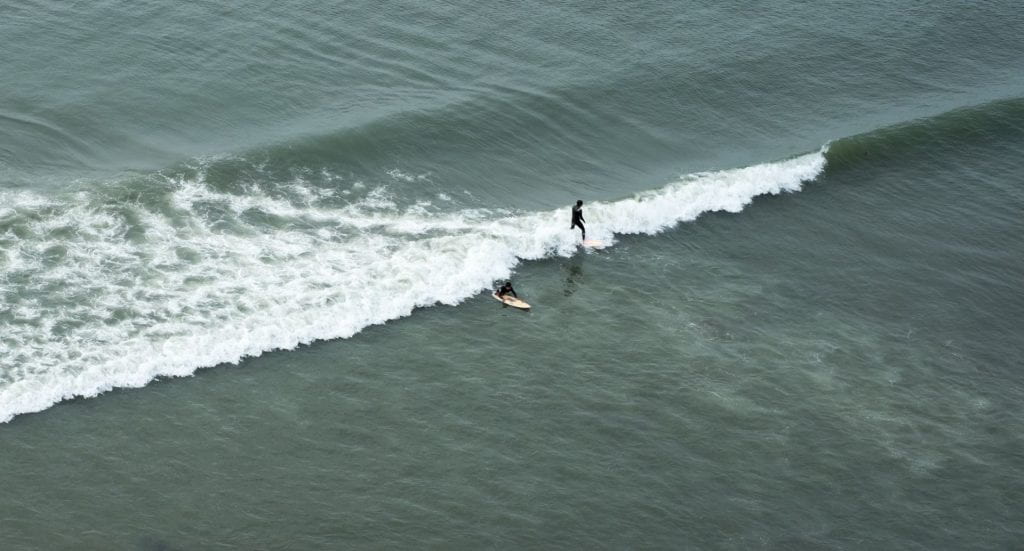The latest instalment of the BBC’s excellent Storyville documentary strand is a film called Into the Storm: Surfing to Survive. This documentary, directed by Adam Brown, follows Jhonny Guerrero, a teenager from the Chorrillos neighbourhood of Lima who is pursuing a career in professional surfing with the help of a project set up by Sofía Mulánovich, Peru’s most successful surfer.
While not an entirely cliché-free production (kid from tough background finds a way forward by following his passion), it’s a sensitively constructed film that shows how surfing in Peru has traditionally been the preserve of the wealthy and the well-connected. And this appears to remain largely true: Jhonny discovers his passion for surfing off the beaches of his own neighbourhood, but the documentary suggests that without the intervention of Mulánovich and her team, he might have been drawn into a life of crime and drugs.
Does this deprive Jhonny of agency, and perpetuate unhelpful stereotypes about Lima’s poorer barrios? Into the Storm comes perilously close to falling into that trap, but ultimately avoids it by paying careful attention to Jhonny’s own words and experiences.

At one of the documentary’s most affecting moments, Jhonny is persuaded to leave his home and to go and live with a family in the more affluent area of Punta Hermosa after being injured in a shooting. Into the Storm doesn’t shy away from depicting the emotional turmoil involved in this decision, nor does it avoid addressing the mutual incomprehension that arises between Jhonny and his mentors, who by their own admission belong to a different world. Jhonny only achieves his best results once he has achieved a degree of reconciliation with his family, and moved back to Chorrillos.
The film raises some intriguing questions for our project: to what extent can the ocean truly act as a space of liberation or escape from social divisions on land? How does the practice of surfing relate to contemporary social and cultural tensions in Peru? Writing in 2009 about surfing in Peruvian literature, David Wood suggests the following:
surfing emerges as an effective medium for addressing the tensions inherent in binary visions, which have characterized Peru’s cultural history […] (the coast and the Andes, heterosexuality and homosexuality, tradition and modernity). By locating itself in a border-land (or, more properly, a landless border), a transitional and ever-shifting space that is located between or beyond such binaries, surfing and the surfer constitute a privileged means of considering problematising and transcending some of the most thorny issues in contemporary Peru and Latin America[…].
David Wood, ‘On the Crest of a Wave: Surfing and Literature in Peru’, Sport in History, 29, 2 (2009), 226-242 (p. 241).
It will be interesting to see how recent cultural developments might fit into, or challenge, this critical framework, and to what extent it might apply to Chile. One area we intend to explore is the intersection between surfing and environmental activism: Peru is unusual in having a ‘Ley de Rompientes’, a law passed in 2000 and implemented in 2013, which allows specific waves to be inscribed in a register for conservation. The NGO HAZla por tu Ola campaigns to have more waves included on this register, and the documentary A la Mar (in Spanish) recounts the history of this campaign.
In Chile, meanwhile, Fundación Rompientes is campaigning for a similar legal framework to be implemented. More to follow on surf culture on that stretch of the Pacific coastline…

